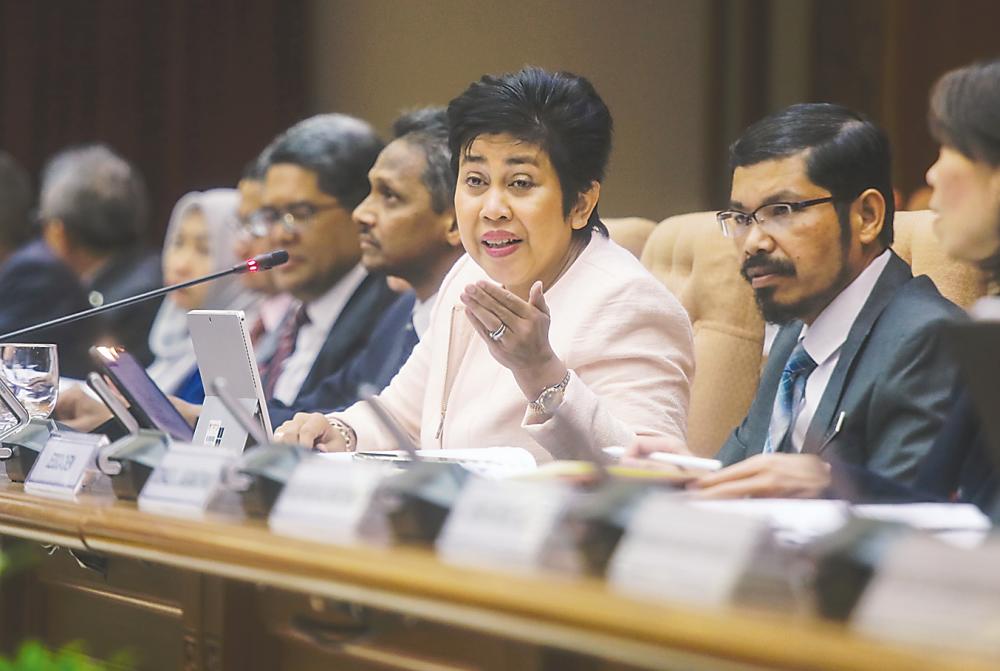KUALA LUMPUR: Malaysia’s gross domestic product (GDP) growth in 2019, which may be lower by 0.1 percentage point (ppt) if there is a further escalation in the US-China trade war, will still be “manageable”, said Socio-Economic Research Centre (SERC) executive director Lee Heng Guie.
He said despite the economy growing 4.7% in the first half of 2019, Bank Negara Malaysia (BNM) still wants to maintain its cautiousness.
“There are still a lot of risks ahead, and this trade war effect could have more impact, also possibly lag effect, going into next year. It’s good to be cautious in the assessment of the economy, at least the government can be well prepared for the risks,” he told SunBiz.
BNM sees lower downside risks for Malaysia this year in its latest assessment of the US-China trade war due mainly to the delay in the implementation of selected tariffs.
“Should the trade dispute escalate further, global growth is expected to be lower by 0.1ppt. Consequently, Malaysia’s GDP growth will be lowered by 0.1ppt in 2019 due to lower trade income and investment activity,” BNM governor Datuk Nor Shamsiah Mohd Yunus said when announcing Malaysia’s second quarter (Q2’19) GDP growth figures last Friday.
Further escalation of trade tensions will weigh on growth outlook, with the central bank also estimating that Malaysia’s exports may be lower by 0.2ppt this year, as global trade is projected to shrink by 0.1ppt.
In its Q318 Quarterly Bulletin, BNM warned that Malaysia’s 2019 GDP could be much lower by 0.9 to 1.1ppt, while exports could be lower by 1.2 to 1.7ppt.
However, BNM is maintaining its projection for the Malaysian economy to grow between 4.3% and 4.8% this year.
“Going into second half 2019, we believe that growth will still be challenging and SERC is keeping our full-year GDP growth estimate of 4.5-4.7%. We’re not expecting a global recession but global growth will still be a key risk for next year,” said Lee.
Malaysia’s economy grew at a stronger pace of 4.9% in Q2’19, from 4.5% in the first quarter, supported, by higher household spending and private investment.
Meanwhile, UOB also remained cautious given escalating external risks. Key risks to its growth outlook include a more pronounced global slowdown, breakdown in US-China trade talks with further tariffs and retaliatory actions, and a no-deal Brexit. It is maintaining its GDP growth forecast of 4.6% for 2019.
“We think BNM is less likely to pursue another rate cut in the upcoming MPC meeting des-pite the recent synchronised rate reductions by four Asia-Pacific central banks last week. BNM has already made one pre-emptive 25bps cut in May and is likely to wait for the outcome of US Fed rate deci-sion, US-China talks, and Malaysia’s Budget announce-ment,” UOB added.
Separately, RAM Ratings maintained its Malaysian GDP growth forecast at 4.6% for 2019 although external headwinds prevail. It said ongoing expectations of weaker economic prospects are envisaged to hamper capacity-building activities. Hence, its expectation for private investment activity this year stands at a moderate 2.2% (2018: 4.8%).
Going forward, it expects the policy stance to stay supportive of growth, with potentially looser monetary policy and fiscal buffers at the ready. Potential moves on the Overnight Policy Rate (OPR) are anticipated to be largely data-dependent, in response to signs of significant downside risks to growth.
“Accordingly, we have maintained our expectation of the OPR ending the year at 3.00%, albeit also of the view that there is scope for further loosening if required. Another factor that may support further easing is benign inflationary pressure that has prevailed.”













